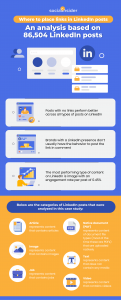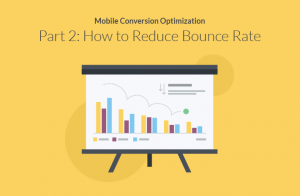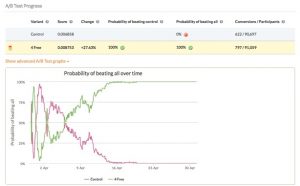When running any kind of digital advertising campaign, it’s easy to look at the end results and declare which channel worked better than others, shift budgets, and move on. Take the following example: your target cost per lead (CPL) is $ 25, your paid search campaign CPL is $ 19, your Facebook ad campaign is $ 26, and your display ad campaign is $ 30. Assuming the lead quality is similar across all three, it looks like the obvious choice is to increase your paid search spend at the expense of the other two. But did you do enough to test each channel and, more importantly, did you run any kind of A/B testing of the creative and messaging within each channel? Lesson learned: creative can also influence the CPL as much as the channel itself.
A/B testing is a key element to all of the advertising and lead generation we do here at DialogTech, and is a cornerstone of how we optimize the spend of an individual advertising channel as well as the the overall spend of a campaign. At its most basic level, A/B testing involves testing two different pieces of creative or messaging to see which one is better at helping you achieve your goal.
There are plenty of resources out there that go into the strategy and details of actually running an A/B test, including this one from our own DialogTech blog. In this post I want to share some tips around getting an A/B testing project off the ground and part of your normal process. I have found that this initial step is the hardest part, but that once you get that first A/B test under your belt and can share real data with your clients or key stakeholders, it will become a key component to any campaign you launch.
- Start small. If you are running media across seven different channels, don’t try to get an A/B test running in each channel at the same time. Chose one or two, and preferably ones that won’t require as many resources. Paid search is a good place to start since it typically only requires you to modify copy.
- Make sure you plan ahead. This is especially important when you are A/B testing banner creative or landing pages on your website. If you are running a display media campaign that calls for six different banner sizes, make sure you leave enough time for your designers to create those extra six banners. Many times marketers are under the gun to get creative out the door by the specified deadline and creating a second set of banner ads becomes a “nice to have” versus a “need to have.”
- Don’t create huge variations. Testing minor differences is one of the keys to A/B testing. Don’t make it complex. If it’s not simple and easily repeatable then you will have a much tougher time getting an A/B testing program off the ground. Simplicity makes it easy to create more variations faster. If your designer has to create another set of banners (and the change from version A to version B is simply a different call to action), then creating those extra banners becomes an easier task. Plus, the key to a successful A/B program is testing small variations. If you have two completely different sets of creative in your A/B testing, how will you know why one performed better than another? When you test small variations, like the image in a banner ad, a call to action, or a line of copy, you can easily point to the reason one did better than the other.
- Show results quickly and act on them. When you have completed your first A/B test, show results quickly to your key stakeholders or clients – and act on them. This is where you pick up momentum and make this part of your normal process. To often a test is run, results are shared, and no action is taken. In these instances, the idea of making A/B tests part of your normal process never come to fruition.
Making A/B testing part of everything you do will add an important data point to your marketing campaigns and give you useful insight to help you optimize your spend. Following the tips above should help you make A/B testing a part of your normal process and help take your marketing to the next level.
Digital & Social Articles on Business 2 Community(125)
Report Post






